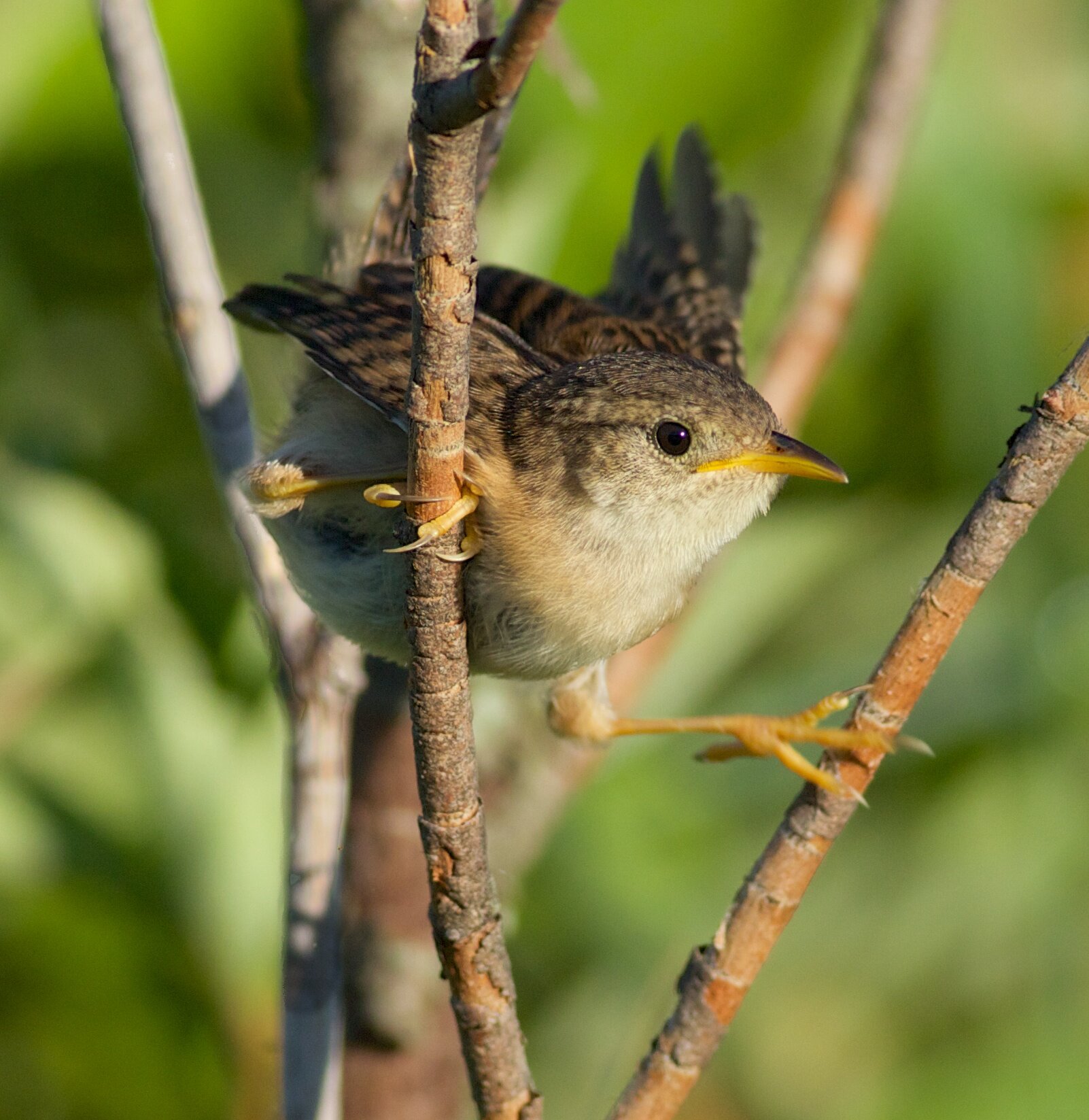Marsh wren by Mick Thompson
The marsh wren is histrionic, bouncing from one cattail to another, calling out with its trill and rattling voice. A whirring vector of motion and sound, the marsh wren frenetically builds anywhere from 5 to 22 nests per year. The male is tasked with building these nests, showing the female around each cattail-down lined nest. However, the female often builds the nest that will become occupied. She steals materials from nearby nesting marsh wrens further along in the nest cycle.
Expending such energy to construct nests likely has the benefit of deception. Marsh wrens will destroy the eggs of other marsh wrens and red-winged blackbirds, while the blackbirds will return the favor. These dummy nests serve as decoys for predators, structure for fledgling young, and mark the male’s territory.
Marsh wren by Arlene Koziol
The marsh wren loves marshes. The first Breeding Bird Atlas in Wisconsin found 79% of marsh wren records in open lowland marsh. An excellent place to find the marsh wren this summer is the Snake Marsh at Faville Grove Sanctuary. The intern crew has discovered numerous nests throughout the Snake Marsh, seeing up-close the wren-crafted nests and wren wrought chattering.
Written by Drew Harry, Faville Grove Sanctuary land steward



































